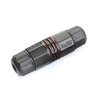BobCajun
Well-Known Member
Another thing to try is bottom light. I just started using about 12w /sq ft of LED screw-in bulbs in Y sockets between the pot tops. You'd be amazed how it lights the plants right up when viewed from above. Should be all solid buds now. It's 7 weeks in when I started this. It'll be interesting to see how it effects yield. All it took was four 100w replacement bulbs, two in each Y socket. I'll have to wait a few days to see if it causes any burning, it's not unusually hot in that area though, just the sudden light increase may do some bleaching.
QB boards could work for that, since they don't get very hot. Could hang them between plants too, for a side lighting effect like a vertical grow. Lighting only from the top seems like wasting the whole bottom part. I'm sick of only the top part being usable and all the lower branches being wasted on fluff.
QB boards could work for that, since they don't get very hot. Could hang them between plants too, for a side lighting effect like a vertical grow. Lighting only from the top seems like wasting the whole bottom part. I'm sick of only the top part being usable and all the lower branches being wasted on fluff.



